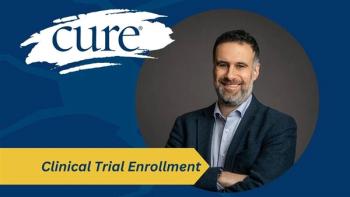
Exploring Combinations in Mantle Cell Lymphoma
Adding Ibrance to Imbruvica may be a promising treatment strategy for patients with mantle cell lymphoma, according to a recent study.
According to the results of a recent phase 1 trial, adding the CDK 4.6 inhibitor Ibrance (palbociclib) can help patients with mantle cell lymphoma (MCL) overcome resistance to Imbruvica (ibrutinib) — a problem nearly half of this patient population faces.
The primary objective of the study was to estimate the maximum-tolerated dose of the combination of Imbruvica and Ibrance. Patients enrolled on the trial were treated in 28-day cycles, with Imbruvica being administered daily and Ibrance administered on days one to 21.
From 2014 to 2016, 20 patients were enrolled in the trial. Results presented at the 2016 ASH Annual Meeting showed that the combination of Imbruvica plus Ibrance produced responses at all dose levels, with a complete response rate of 44 percent.
Regarding safety, the most common grade 1/2 adverse events (AEs) were diarrhea (50 percent), fatigue (44 percent), rash (39 percent), bruising (17 percent), nausea (17 percent), fever (11 percent), dyspepsia (11 percent) and myalgia (11 percent). Grade 3/4 hematological toxicities include thrombocytopenia (28 percent), neutropenia (22 percent) and lymphopenia (17 percent).
What was the rationale behind exploring dual CDK 4/6 and BTK inhibition in MCL?
In an interview with CURE, Peter Martin, M.D., associate professor of medicine in the Division of Hematology/Oncology at Weill Cornell Medicine, discussed the results of this phase I trial and other notable abstracts from the ASH Annual Meeting.Imbruvica is clearly an active drug in MCL, but it's not perfect. About 30 percent to 40 percent of people with MCL don't respond to Imbruvica. Of the people who do respond, they're on treatment for one to 1.5 years, on average.
The outcomes following Imbruvica failure tend to be poor. Imbruvica is a drug that is well tolerated, but it needs to be combined with other drugs to capitalize on its tolerability and efficacy profiles. To make it work more effectively, we need to figure out why it doesn't work in certain patients and what you can add that might make it work better.
Ibrance is an oral CDK 4/6 inhibitor. MCL is a cancer that is essentially 100 percent dependent on dysregulation of the cell cycle. That dysregulation is due to a translocation that results in overexpression of the gene called cyclin D1. It turns out that CDK4 combined with cyclin D1 forms a holoenzyme and that correlates to a protein called retinoblastoma, which releases a break on the cell cycle.
If you left a whole bunch of cyclin D1 floating around, you're just releasing the break on the cell cycle so these cells are genetically primed to proliferate. Ibrance inhibits CDK 4 so it does the exact thing that you would want from a targeted drug to treat MCL.
What were the results from the trial?
Both Imbruvica and Ibrance make sense when treating MCL, but then the question is: what do they do together? We generated data in the lab looking at cell lines and primary tumor samples from people with Imbruvica-resistant MCL. We have found that there were a variety of different reasons why people might become resistant to Imbruvica but there were some mechanisms that seemed to be overcome by Ibrance. By exposing these Imbruvica- resistant cells to Ibrance and then subsequently exposing them to Imbruvica, we could kill more MCL cells than you might with either drug alone. They’re re-sensitizing Imbruvica-resistant cells to Imbruvica.The objective of the trial is not to look at activity but rather to identify a dose of both drugs in combination that could be tested in a subsequent trial.
We accomplished that objective of the trial and we found that 560 mg of Imbruvica could be combined safely with 100 mg of Ibrance for 21 out of 28 day cycles. Additionally, we found that the combination was well tolerated and we have patients that who have been on it now for over 2.5 years.
A big part of the question is: how well do those drugs work together? We found what one would expect, based on what we knew from the preclinical data. There were around 30 percent of patients who did not respond at all and those were patients who had genetic changes in the cells that, if you had known them before, you would predict they would be resistant to Ibrance and Imbruvica together.
How was the safety profile?
We found that there were other patients, about 70 percent, who responded well and seem to have a more rapid response than you might expect with Imbruvica alone. There was a high rate of complete response. Thus far, none of the people who responded to the combination have progressed. Now, we have several people that are on Imbruvica beyond two years, supporting the preclinical data that we had developed.Some of the grade 1/2 AEs that we saw were moderate fatigue, moderate diarrhea and prevalent rash.
The most common grade 3/4 AEs were myelosuppression, which would be thrombocytopenia, and it was consistent with what we would have expected from Ibrance. Prior studies in MCL and other cancers had shown to have some myelosuppression.
What are the next steps with this research?
We saw some grade 3/4 neutropenia and thrombocytopenia. The rate of bleeding or bruising was low, and there were some infections. However, it was hard to say whether the rate of infections was any higher than you might expect from Imbruvica, Ibrance, or in patients with very aggressive MCL. Two patients had a grade 3 rash at the highest dose level we tested, which was why we came back down to the maximum-tolerated dose.The first step is to further evaluate the activity and safety of this combination in a larger population and see how well this combination works. Treating a larger number of patients will also help us better estimate the toxicity profile and tolerability of the combinations. Another key step is to develop better predictors of whom we expect might or might not respond so we could, in theory, personalize treatment decisions in the future. We already developed some ideas based on the small number of people we have treated. However, with a larger number of patients, we will have a better chance of being able to define and characterize the profiles of tumors that are most likely to be responsive.
What were some of the other key findings in MCL presented at ASH that caught your eye?
We are moving into a multicenter phase 2 clinical trial through ALLIANCE.One that is potentially practice changing is a trial from the LYSA group from France. It was a clinical trial that looked at Rituxan (rituximab) maintenance every eight weeks for three years after frontline therapy with four cycles of DHAP (dexamethasone, cytarabine, and cisplatin) plus autologous stem cell transplantation (ASCT). Everybody in the clinical trial received intensive induction and consolidation.
Then, they were randomized to either observation or Rituxan maintenance. Everybody expected there to be a progressive-free survival benefit to the Rituxan maintenance arm. There was, but, more importantly, there was an overall survival benefit. Somebody that received an intensive induction should at least be considered for Rituxan maintenance.
Another one was a clinical trial for patients who were not candidates for intensive induction therapy. It was an Italian study that evaluated a regimen called R-BAC500, which is bendamustine/Rituxan (BR) plus intermediate-dose cytarabine. This is an attempt to combine cytarabine with another drug in patients who are not eligible for intensive therapy.
They had previously done a very similar regimen called R-BAC800, which is 800 mg of cytarabine instead of 500 mg. It was found that it was active, but it was not very well tolerated. It was better tolerated at the 500 mg dose, so they had a high response rate. It was a 91 percent complete response rate and those responses looked durable.
Follow-up is still ongoing, but it reinforces that BR is a backbone that can be built upon with other drugs. Many people have tried other drugs such as Revlimid (lenalidomide), Velcade (bortezomib), Imbruvica and, in this case, cytarabine.
Can you discuss the increased significance of minimal residual disease (MRD) in MCL?
In each case, you get some improved activity at the extent of some toxicity. They found that the toxicity was well tolerated and had major payoffs, in terms of activity. Based on that, it's fair to say that a phase 3 clinical trial with one arm including the R-BAC500 regimen would be appropriate.MRD potentially holds prognostic significance. Several studies have shown that whatever therapy you use, patients who achieve eradication of detectable MRD had better outcomes. If we can achieve eradication of MRD without overdoing toxicity, patients are likely to have durable benefits as a result.
The other thing that MRD could be used for would be to guide therapy. If somebody still has detectable MRD at the end of some form of therapy, it could be argued that they could be candidates for additional therapy. For example, if you're deciding whether to give somebody an ASCT, you might give him or her an induction regimen and determine whether they have detectable MRD.
What are some of the main challenges that still exist in advancing MCL care?
The other thing that MRD could be used for, in terms of guiding therapy, is in people who have no detectable MRD but develop a molecular relapse. That might be a reasonable time to intervene with a less intensive strategy and potentially get back that molecular remission. Monitoring molecular evidence of disease might allow for more prolonged, less intensive therapies as a way of maintaining clinical remissions for longer periods of time.In the frontline setting, determining who needs intensive therapy or who might benefit most from intensive therapy is a challenge that we’re facing. Today, the biggest question in patients who have been previously treated is, "How do we improve on Imbruvica?" The answer is to use it with certain combinations. We need clinical trials that test those combinations and have the science to back up why certain combinations might be better. We need to develop access to predict which combination is most likely to be effective for a particular patient.





